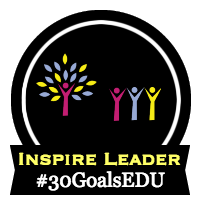Introduction
The topic of professional development (PD) seems to be a vexed issue among educators. Who should have it? What PD is most relevant to the individual? Is PD even needed? If so, how and when should it be undertaken? Who should deliver that PD?
I offer the experience below not by way of answering any of these questions but in the hope that it may shed some light on the discussions surrounding them. I have suppressed the identity of the person that prompted this post, as well as avoiding their particular area of expertise, with a view to saving embarrassment. I refer to that individual as “Q”.
Background
Q and I have known each other for years, and we routinely exchange ideas via Twitter. He had been teaching “X” for two years when the events below unfolded, and he felt that he was in command of his subject when it started. It turned out that his knowledge was both partial and faulty, though he did not know that at the time.
The Events
What started as a direct message (DM) unleashed a tsunami of learning for Q. He was puzzled by one small thing, and he sent me a DM about it. There then followed a long exchange of direct messages, including links to educational resources. It rapidly became apparent that we needed a face-to-face session, and the date, time and location were agreed.
I then prepared a PD session using a workshop approach. This included a session plan, handouts, and generating appropriate questions to ask of Q. The first task of the session was to correct Q’s misunderstandings, followed by a gap analysis, and ending with some delivery of learning. Everything was customised to Q’s context. This established a basis for what was to follow.
The face-to-face PD lasted for two hours, and Q was exhausted at the end of it. The amount of preparation time and effort needed for that session was about the same as would be needed for any session of that duration regardless of the number of participants.
The remaining PD was via direct messages, this perhaps contrasting starkly to the factory model of delivering PD to a group of people in a room.
Q then shared some of his students’ work for my comment, and it also became apparent that he was getting a firm grasp of the fundamental concepts. We then went on to the topic of grades. The grade descriptors figured very strongly here. Where Q saw a B and and B+, I saw a B and an A. Working in the industry as I do, I immediately understood the grade descriptors in both the work context and the educational context. Q did not have that advantage. The PD had moved from the phase of understanding the content to the phase of understanding how student work should be graded.
The final step of the PD was to bring in industry considerations, something that was beyond the scope of the curriculum, but that would nevertheless help to inform Q of the type of feedback that he could be giving to his students.
Q shortly afterwards expressed great gratitude for what I had helped him to learn.
Final Comments
The above may point to some perhaps intractable problems. If Q had been asked if he needed PD before all these events happened his answer would almost certainly would have been “no”. Even if he had said “yes”, how would decision makers made the necessary PD available to him? Where would they find the funding, the training provider, and the political will? Regardless of the answers to those questions, I think it is worthwhile pointing out that Q sought out his own PD, and this has benefited both himself and all his existing and future students.
